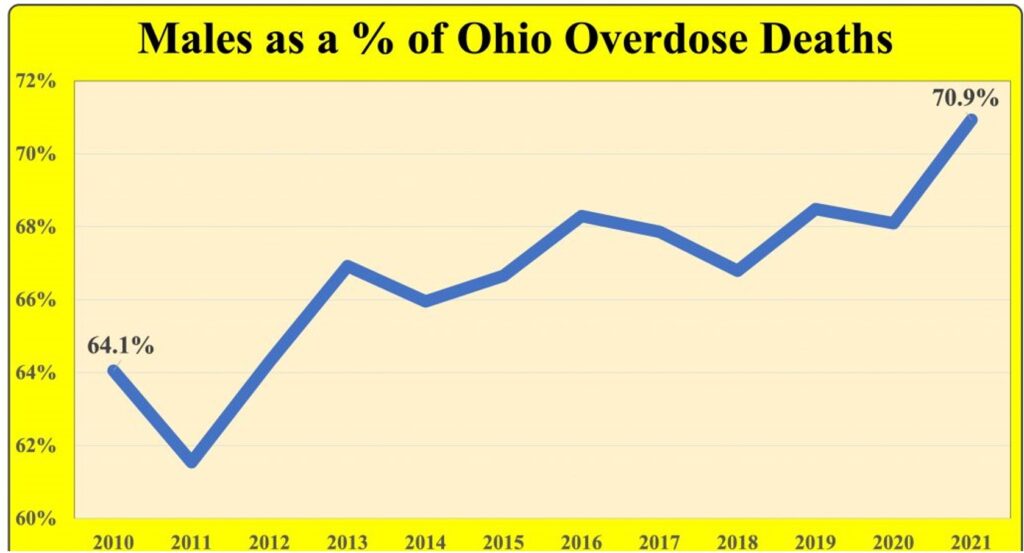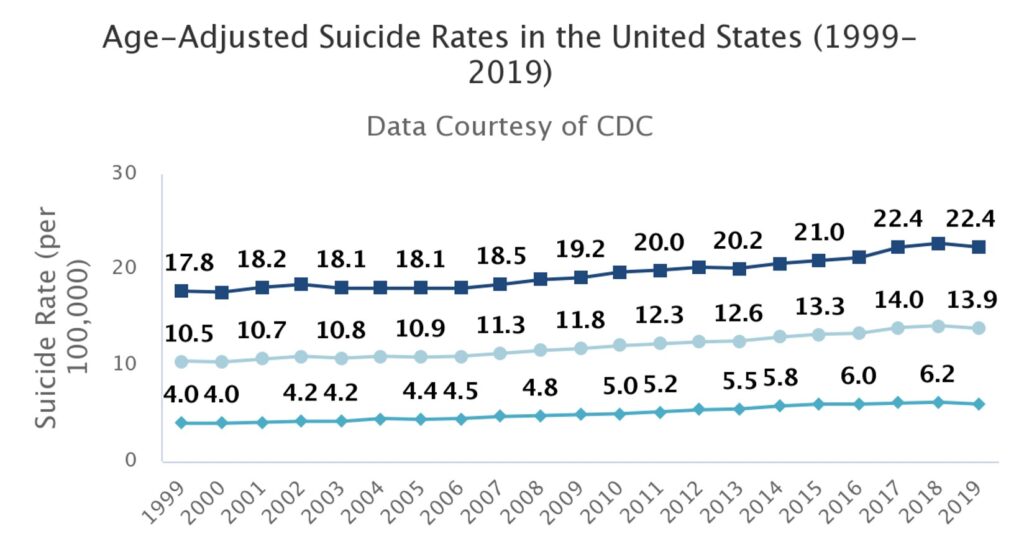DEATHS OF DESPAIR
POLICY SYMPOSIUM
What Are Deaths Of Despair?
Deaths Of Despair refers to the decline in life expectancy among men related to three behavior-related medical conditions:
MALE ACCOUNT FOR MORE THAN 70% OF OHIO’S OPIOD DEATHS
70.9% of reported overdose deaths have been male. That’s the highest percentage since at least 2007 (when the current mortality data starts) and perhaps ever.
An increase in overdose deaths among Black males is the biggest driver of this change. Black males make up 6.8% of Ohio’s population but accounted for 12.6% of the 1,844 overdose deaths recorded so far in 2021 in the Ohio Department of Health mortality data.

MALES ON AVERAGE DIE BY SUICIDE MORE THAN 3X AS OFTEN AS WOMEN
The suicide rate among males in 2022 was approximately four times higher than the rate among females.
Males make up 50% of the population but nearly 80% of suicides.


RATES OF ALCOHOL-INDUCED DEATHS FOR MALES ARE MORE THAN 2.5 TIMES HIGHER
Of the 98,457 liver disease deaths among people ages 12 and older in 2022, 46.0% involved alcohol. Among males, 60,412 liver disease deaths occurred, with 48.6% involving alcohol.
Rates of alcohol-induced deaths for males were stable from 2000 to 2009, increased 30% from 2009 (11.3) to 2018 (14.7), and increased 26% from 2019 (15.2) to 2020 (19.2).
POLICY SYMPOSIUM GOALS
Raise Awareness: Highlight the gendered nature of deaths of despair (opioid overdoses, suicide, and alcohol-induced deaths) and their disproportionate impact on Ohio's male population.
Foster Collaboration: Bring together policymakers, public health experts, community organizations, and advocates to identify actionable strategies.
Promote Equity: Address disparities in mental health access, addiction services, and suicide prevention resources, with an emphasis on gender and underserved communities.
Generate Policy Solutions: Develop recommendations and policy frameworks to reduce deaths of despair in Ohio through prevention, early intervention, and systemic








